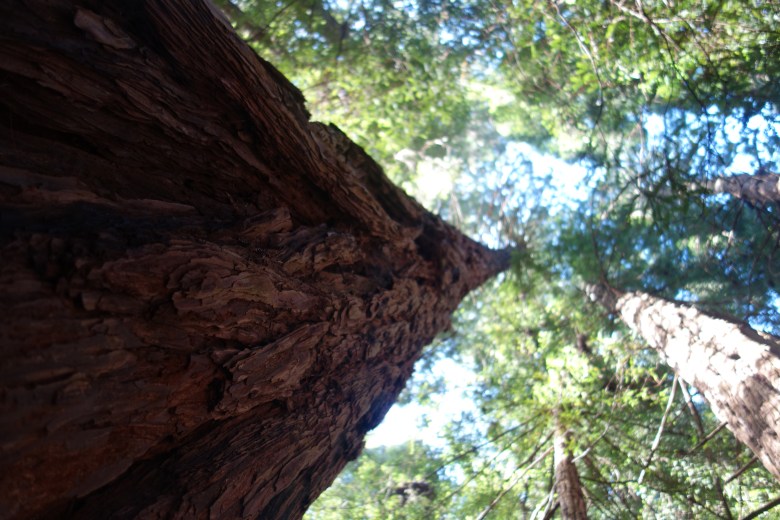“The Mountains are Calling, and I must go.” – John Muir
I have to admit that I have loved this quote ever since I started hiking, and it seems all other hikers do too. However, I did not fully appreciate this quote OR John Muir until our honeymoon adventure. From the moment we entered Muir Woods I have learned so much about this incredible man who made it his sole purpose in life to educate himself and others, and to also spark a love in others, about the wonder and beauty of nature. I bought 3 of his books and even though he lived so long ago, I feel like I know him. The mountains literally called him, and his few excursions into the hustle and bustle of civilization left him feeling drained. He had to go back to the mountains to refuel, and I think that’s something everyone should take to heart.

*Not pictured: the thick fog floating in the treetops
Day 6
The first thing I learned entering John Muir Woods was that Coastal Redwoods and Sequoias are NOT the same thing. Coastal Redwoods are the tallest living things on earth, the tallest one is 379 feet. Giant Sequoias just grow tall enough to steal the sunlight from the trees around them, but then they grow wider each year instead of taller. The largest Giant Sequoia we saw had a circumference of 109 feet (more on that later). There are many differences between the two, but a few similarities we learned are:
1. They can both live well over 2,000 years old.
2. Both were in danger of being logged at one point or another, but their existence was preserved and they were protected by people who recognized early on what a treasure these trees are to behold.
Stepping into John Muir Woods reminded me of A Sound of Thunder by Ray Bradbury. The most trafficked paths are paved, the trees are fenced off, and the people visiting navigate through this primeval, mystic, and ethereal forest with profound respect. The trees and land in this National Monument are clearly well cared for, and the trees themselves are revered monuments spoken to in hushed tones reserved for churches or libraries.

We learned about the vital role fire plays in a redwood’s survival. Fire helps to burn away plant matter so that redwood seeds can reach the soil, and fire also kills bacteria and fungi that can kill seeds. The pictures below shows trees who lived through fires. The bark contains tannin and it is very thick and spongy, so it resists low-intensity fires pretty well.


wide rings mean heavy rainfall years, and narrow rings mean drier years 
We also learned that redwoods do not have a main tap root to hold them in place, but a whole network of roots that remain relatively close to the surface and spread up to 100 feet from its base. This shallow web of roots is what led to the paved walkways and fenced off areas. Too much traffic damages and weakens the roots, and can ultimately lead to their downfall. Selfies can kill!


Redwood Sorrel 
Family Circle
Instead of just growing from seeds, redwoods can grow from burls. These are just dormant buds that grow on redwoods that can sprout a new tree if the original tree is damaged. Redwoods can also grow in family circles. If the one redwood dies but its roots are still healthy, other burl sprouts will grow out of the massive root system underground to make many new trees in its place.
I was very drawn to this Redwood Sorrel because of how wonderfully green it was, and how dense it was on the forest floor. We read how it has adapted to its surrounding by opening its leave in the full shade, but when the sun starts to creep in and it gets too hot, they close up like little umbrellas.


Dan’s new day pack. 

coastal redwood bridge 
We hiked up and out of the trees to get some sun,
because I am the opposite of redwood sorrel
10/10 Would Go Again













Love the pictures, so beautiful. Hope to visit on day!
What an awesome adventure! Loved the pictures and the narration, felt like I was along for the hike.